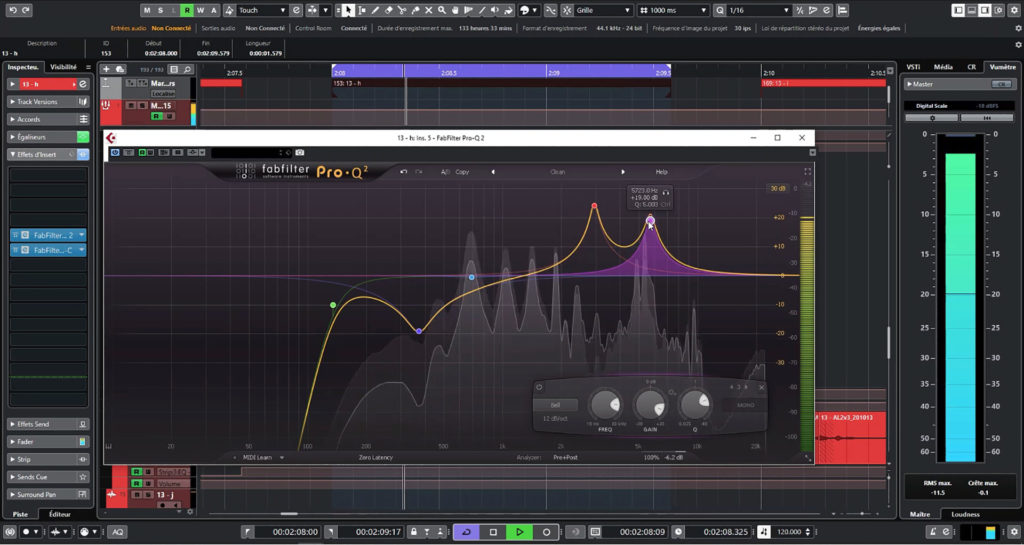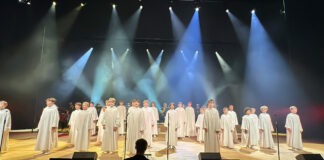
Since the beginning of the development of Renault’s first electric models, a series of new questions have come up about their characteristic silence. How do you warn pedestrians of an approaching vehicle? How do you produce an audible warning that is both effective but still gentle? What about a signature sound design for electric vehicles that is exclusive to the brand?
Laurent Worms, Audio Strategy Manager, Renault Group, tells the story of the process for creating a VSP – a Vehicle Sound for Pedestrians – while also looking to the future of electric vehicle sounds with Renault Group’s long-term partner, IRCAM (Institute for Research and Coordination in Acoustics/Music.
It might seem odd to add a sound to an electric vehicle that is, by its very nature, silent. However, there is a safety requirement, and a VSP warning is compulsory and must be included in a vehicle’s development. With no external warning sound, pedestrians can’t hear electric vehicles approaching at low speeds.
Drivers also tell us that they need to be audible in all circumstances, especially in town. If the priority is to “warn by reassuring”, the challenges of sound design open up lots of opportunities and fascinating paths.
“What strikes you when you are in an electric car is the silence. We want to disguise this silence with a voice”, says Laurent Worms.
The sound of silence

Since its very first electric concept cars, Renault has been a pioneer in the development of a specific VSP. It became a reality in 2012, with the production version of the first-generation Zoe, which had a warning sound that had to declare, “I’m electric, I’m cutting edge, I’m a Renault”.
It also had to be a sound that evoked Renault’s gentle, human-focused values; a signature sound that would later be used on other electric models. “The idea is, of course, to warn pedestrians without scaring them. At the same time, we have to make a positive association between this warning, electric cars and the Renault brand”, says Laurent Worms.
Renault is preparing a new generation of electric models derived from the Megane eVision and R5 Prototype show cars. These models require their own next-generation external sound developed, like the first one, by the Perception and Sound Design research teams in the studios and labs at IRCAM in Paris.
The process of creating the perfect sound
Sound design is all about teamwork. It requires vision, technical skill, patience and attention to detail, bringing together many Renault Group disciplines, including those in the Product, Design and Engineering departments. It also calls on outside partners and experts to arrive at the ideal VSP.
The established partnership between Renault Group and IRCAM began in 1994, long before Renault opted for electric as its future in the automotive world.
In fact, Laurent Worms and other employees learned their trade at IRCAM before joining Renault in the cutting-edge field of applied acoustics.
Laurent says: “My role is to set a course. I rely on the rich feedback from our customers and on current trends to write the sound specifications that describe the desired environments and evocations that will chime with our brand identity.”
In creating the sounds of next-generation electric Renault models, the team needed to keep a link with earlier productions while ensuring they were developed for the future. IRCAM has skills in research, acoustics, music and sound that are essential for this type of industrial application and its constraints.
Under the leadership of Nicolas Misdariis, Director of Research and manager of the PDS teams, and Andrea Cera, a composer and sound designer who has worked with the PDS teams for many years, the work could begin.

The first stage of a project as important as this consists of understanding one question: what is the required and desirable personality of the external sound?
Data on technical, ergonomic, functional and identity aspects are all analysed in briefing sessions using images, words, sound libraries and noises that express what the final sound designs need to be.
Nicolas Misdariis says: “This work is part of a long history of collaboration, and it benefits from the feedback and experience from more than 10 years of work. This means we can define and consolidate strong concepts such as intrusiveness. The goal is to meet an essential need of sound ecology: to make the sound as unobtrusive as possible inside the vehicle, for greater comfort.”
The results of the briefing sessions must then be converted into audible materials using instruments and real (recorded) sounds or synthetic computerised sounds, while applying the fundamental rules of harmony. We know, for example, that a major or consonant chord will create a feeling of relief or joy. Conversely, a dissonance in this type of chord will immediately suggest tension.
Then the sound designer blends these elements into a harmonious mix, followed by rhythms and modulations that form a cohesive interactivity between sounds, a key component in creating a VSP. A successful VSP adapts to movements of the car and contributes to a unique, dynamic, signature sound.
Finding the right balance
After the research stages, a potential trap is that several subjective directions or proposals can emerge from personal assessments based on various individuals’ tastes. A further trap would be to seek to reconcile every opinion, which is just not possible. The role of the customer sound experience manager throughout the project is to ensure the initial brief is met.
When decisions are made throughout the process, it’s essential that they combine to form a signature sound that will prove itself over time, as a beacon of the Renault brand.
The final word goes to Laurent Worms: “My dream is that the sound signature of future Renault electric vehicles will create an emotion akin to the effect of a seductive perfume, while contributing to an improved sound environment for the city of the future.”
Laurent Worms: Audio expert and accomplished musician
Laurent is passionate about sound design and new audio technologies. Behind the engineer with a postgraduate diploma in acoustics for music, awarded by IRCAM, stands a freelance multi-instrumentalist muso.
When he can, Laurent goes on stage to sing and play electric guitar with a pop/rock covers band. Laurent also composes music on a computer, combining analogue and digital technologies. Now that’s what you call combining passion for sound at work and play!
Renault Group and IRCAM: A partnership of over a quarter of a century
Founded by Pierre Boulez, the Institute for Research and Coordination in Acoustics/Music is linked with the Centre Pompidou under the aegis of France’s Ministry for Culture. Since its creation in 1977, IRCAM’s key mission has been to encourage fertile interaction between scientific research, technological development and contemporary music creation.
These fields provide the main framework for all of its activities at the STMS laboratory which, with its seven research teams, houses the various components of the sound and music sciences and technologies.
For Renault Group, IRCAM has been working since 1994 on subjects as varied as engine sound quality, audible warnings, the passenger compartment soundscape and external vehicle signatures.
More recently, IRCAM and, in particular, Andrea Cera and Nicolas Misdariis, have worked on research sound projects associated with the Renault Zoe and the DeZir, Frendzy, Twin Z, TreZor and SYMBIOZ concept cars.







